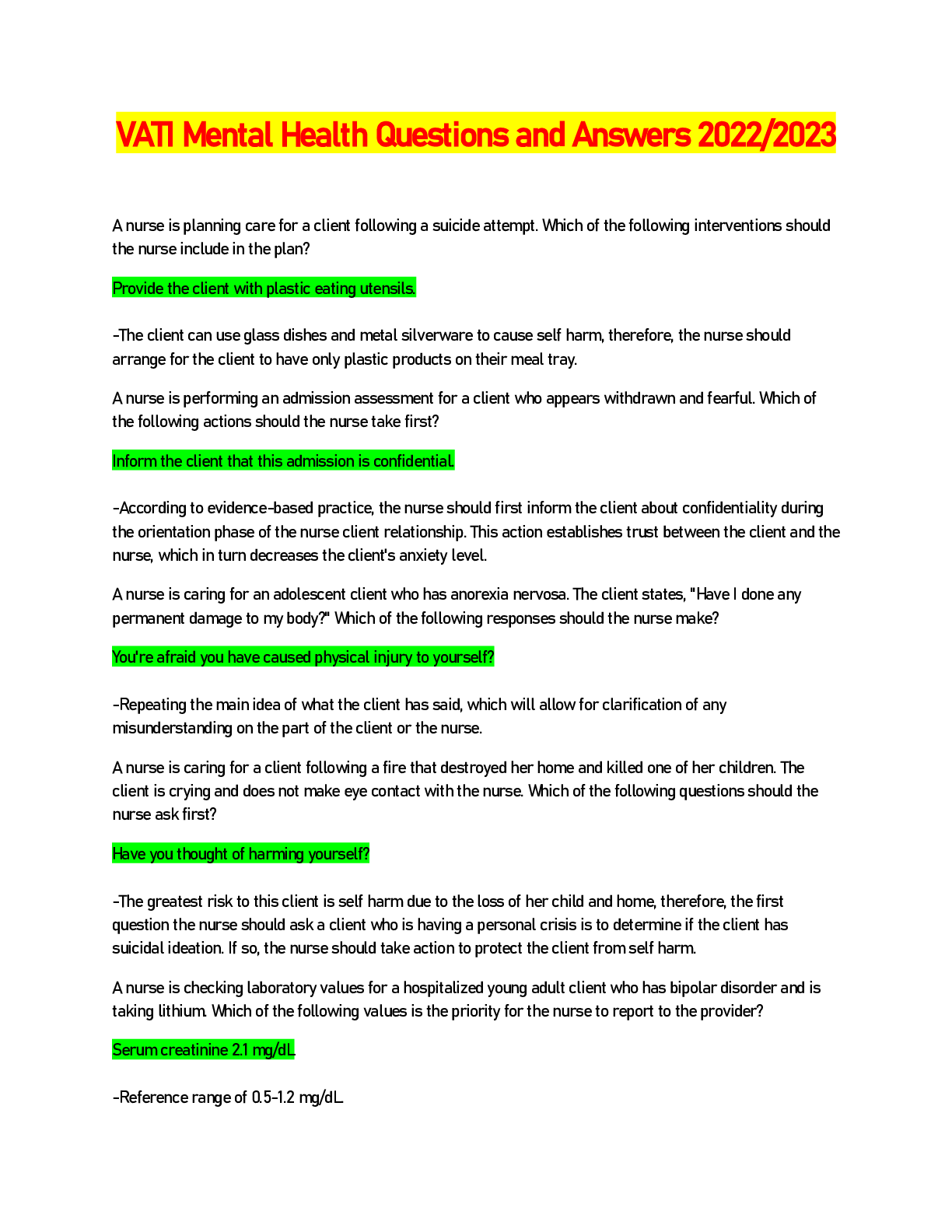*NURSING > ATI > ATI Nurse Logic 2.0 ~ Priority Setting Frameworks (Advanced Test) questions and answers 2022/2023 (All)
ATI Nurse Logic 2.0 ~ Priority Setting Frameworks (Advanced Test) questions and answers 2022/2023
Document Content and Description Below
A nurse is caring for a group of pediatric clients. Which of the following clients requires immediate intervention? A. A client who has cystic fibrosis and has a paroxysmal cough B. A client who i... s prescribed cromolyn sodium (Crolom) and has a peak expiratory flow rate of 79% C. A client who has celiac disease and abdominal distention D. A client who is prescribed digoxin (Lanoxin) and has had three episodes of vomiting D. A client who is prescribed digoxin (Lanoxin) and has had three episodes of vomiting Rationale: A. Answering this item requires application of the acute versus chronic priority setting framework. Using this framework, acute needs are typically the priority need because they pose more of a threat to the client. Because chronic needs usually develop over a period of time, the client has more of an opportunity to adapt to the alteration in health. It is also important to attend to alterations when they are in the acute phase so they don't escalate into a life-threatening event or evolve into a chronic alteration in health. Nursing knowledge might also be needed to determine which option describes an acute need. A paroxysmal cough is a clinical manifestation associated with cystic fibrosis, which is a chronic condition. While the client should be further evaluated, there is another client who has more acute needs that requires immediate intervention. B. Answering this item requires application of the acute versus chronic priority setting framework. Using this framework, acute needs are typically the priority need because they pose more of a threat to the client. Because chronic needs usually develop over a period of time, the client has more of an opportunity to adapt to the alteration in health. It is also important to attend to alterations when they are in the acute phase so they don't escalate into a life-threatening event or evolve into a chronic alteration in health. Nursing knowledge might also be needed to determine which option describes an acute need. Cromolyn sodium is a nonsteroidal anti-inflammatory medication used as an asthma prophylactic. A peak expiratory flow rate of 79% is below the expected rate and signals the possibility that asthma is not well-controlled. While the client should be further evaluated, there is another client who has more acute needs that requires immediate intervention. C. Answering this item requires application of the acute versus chronic priority setting framework. Using this framework, acute needs are typically the priority need because they pose more of a threat to the client. Because chronic needs usually develop over a period of time, the client has more of an opportunity to adapt to the alteration in health. It is also important to attend to alterations when they are in the acute phase so they don't escalate into a life-threatening event or evolve into a chronic alteration in health. Nursing knowledge might also be needed to determine which option describes an acute need. Abdominal distention results from impaired nutrient absorption and is a clinical manifestation associated with celiac disease, which is a chronic condition. While it is important to collect data regarding dietary intake and discuss appropriate dietary management, there is another client who has more acute needs that requires immediate intervention. D. Answering this item requires application of the acute versus chronic priority setting framework. Using this framework, acute needs are typically the priority need because they pose more of a threat to the client. Because chronic needs usually develop over a period of time, the client has more of an opportunity to adapt to the alteration in health. It is also important to attend to alterations when they are in the acute phase so they don't escalate into a life-threatening event or evolve into a chronic alteration in health. Nursing knowledge might also be needed to determine which option describes an acute need. Vomiting, slow heart rate, and anorexia are clinical findings associated with digoxin toxicity, which is an acute condition. Based on the acute versus chronic priority setting framework, this is the client that requires immediate intervention. A nurse working the 7 p.m. to 7 a.m. shift on a pediatric unit has received report on four postoperative clients. Which of the following requires immediate intervention? A. An adolescent who is postoperative following an appendectomy and has refused to ambulate for the past 8 hr B. A school-age child who is postoperative following a herniorrhaphy with an infiltrated peripheral IV that has been clamped C. A preschooler who is postoperative following a tonsillectomy and is experiencing frequent swallowing D. An infant who is postoperative following a cleft palate repair with a heart rate of 146/min and a respiratory rate of 28/min C. A preschooler who is postoperative following a tonsillectomy and is experiencing frequent swallowing Rationale: A. Answering this item requires application of the unstable versus stable priority setting framework. Using this framework, unstable clients get priority because of needs that threaten the client's survival. Threats or problems involving the airway, breathing, or circulatory status are considered life-threatening needs that should be addressed first. Clients whose vital signs or laboratory values indicate a risk for becoming unstable are also a higher priority than clients who are stable. Nursing knowledge might also be needed to determine which option describes the most unstable client. An adolescent who refuses to ambulate following abdominal surgery needs additional education and encouragement; however, there is another client who is unstable and requires immediate intervention. B. Answering this item requires application of the unstable versus stable priority setting framework. Using this framework, unstable clients get priority because of needs that threaten the client's survival. Threats or problems involving the airway, breathing, or circulatory status are considered life-threatening needs that should be addressed first. Clients whose vital signs or laboratory values indicate a risk for becoming unstable are also a higher priority than clients who are stable. Nursing knowledge might also be needed to determine which option describes the most unstable client. An infiltrated peripheral IV needs to be discontinued and another IV started; however, because the IV tubing has been clamped, stopping the infusion of fluids, there is another client who is unstable and requires immediate intervention. C. Answering this item requires application of the unstable versus stable priority setting framework. Using this framework, unstable clients get priority because of needs that threaten the client's survival. Threats or problems involving the airway, breathing, or circulatory status are considered life-threatening needs that should be addressed first. Clients whose vital signs or laboratory values indicate a risk for becoming unstable are also a higher priority than clients who are stable. Nursing knowledge might also be needed to determine which option describes the most unstable client. A preschooler who is experiencing frequent swallowing following a tonsillectomy could be bleeding, placing the client at risk for hemorrhage. Bleeding from the surgical site can cause the dripping of blood down the back of the throat, which results in frequent swallowing or clearing of the throat and indicates the client could be unstable. Based on the unstable versus stable priority setting framework and nursing knowledge, the client requires immediate intervention. This option is further supported by the ABC priority setting framework. D. Answering this item requires application of the unstable versus stable priority setting framework. Using this framework, unstable clients get priority because of needs that threaten the client's survival. Threats or problems involving the airway, breathing, or circulatory status are considered life-threatening needs that should be addressed first. Clients whose vital signs or laboratory values indicate a risk for becoming unstable are also a higher priority than clients who are stable. Nursing knowledge might also be needed to determine which option describes the most unstable client. An infant with a heart rate of 146/min and a respiratory rate of 28/min following a cleft palate repair needs to be evaluated further by the nurse; however, there is another client who is unstable and requires immediate intervention. [Show More]
Last updated: 2 years ago
Preview 1 out of 17 pages

Buy this document to get the full access instantly
Instant Download Access after purchase
Buy NowInstant download
We Accept:

Reviews( 0 )
$13.00
Can't find what you want? Try our AI powered Search
Document information
Connected school, study & course
About the document
Uploaded On
Oct 04, 2022
Number of pages
17
Written in
Additional information
This document has been written for:
Uploaded
Oct 04, 2022
Downloads
0
Views
314


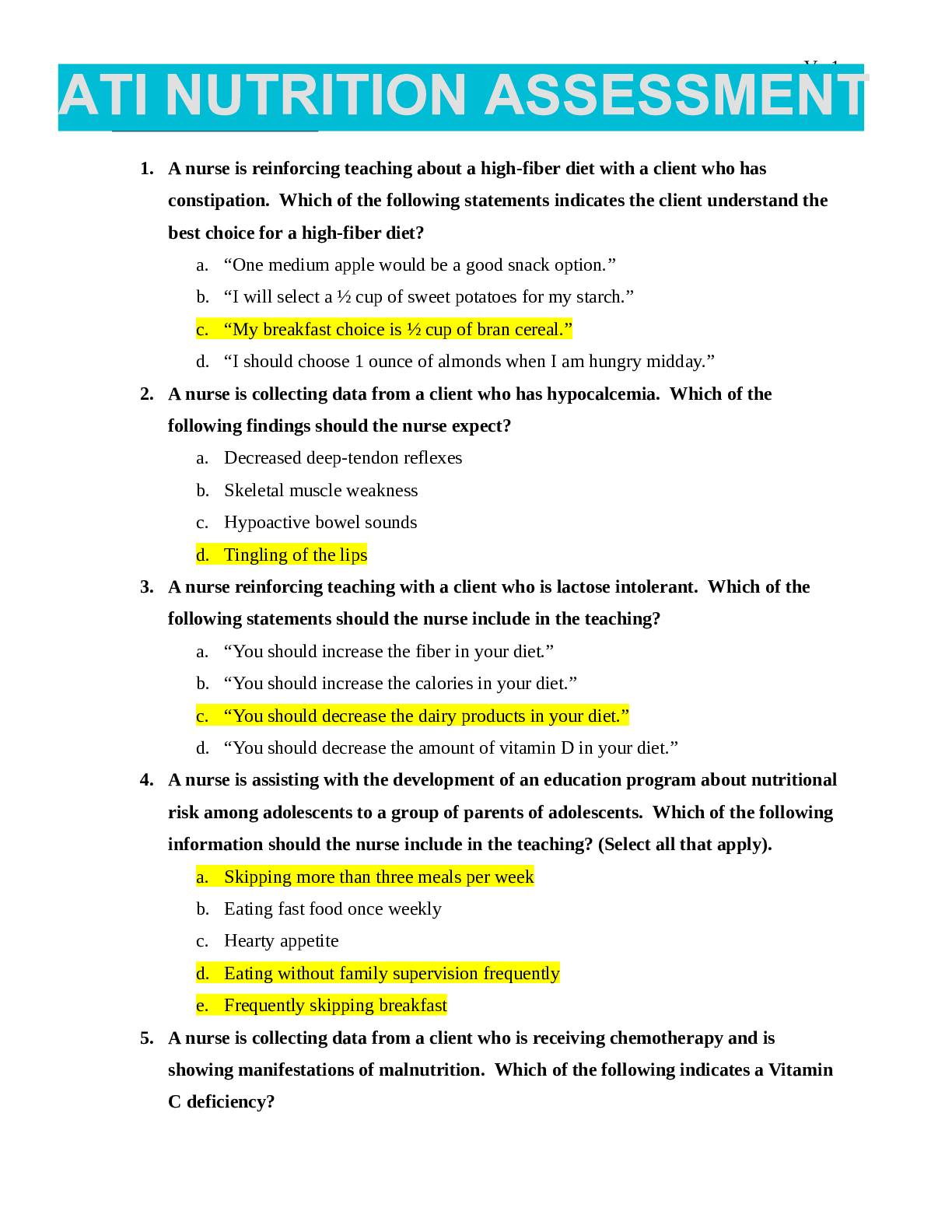


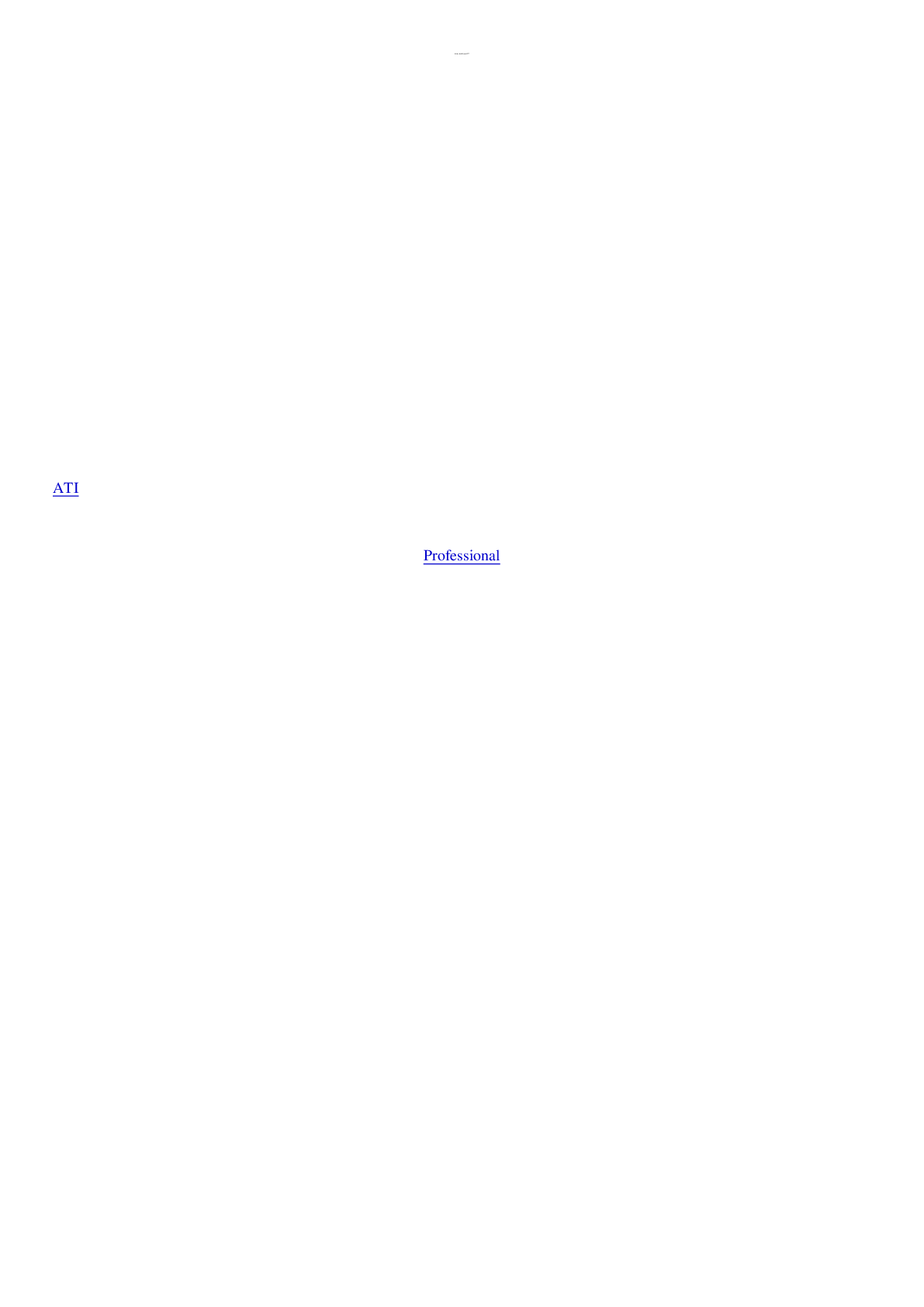
.png)
.png)
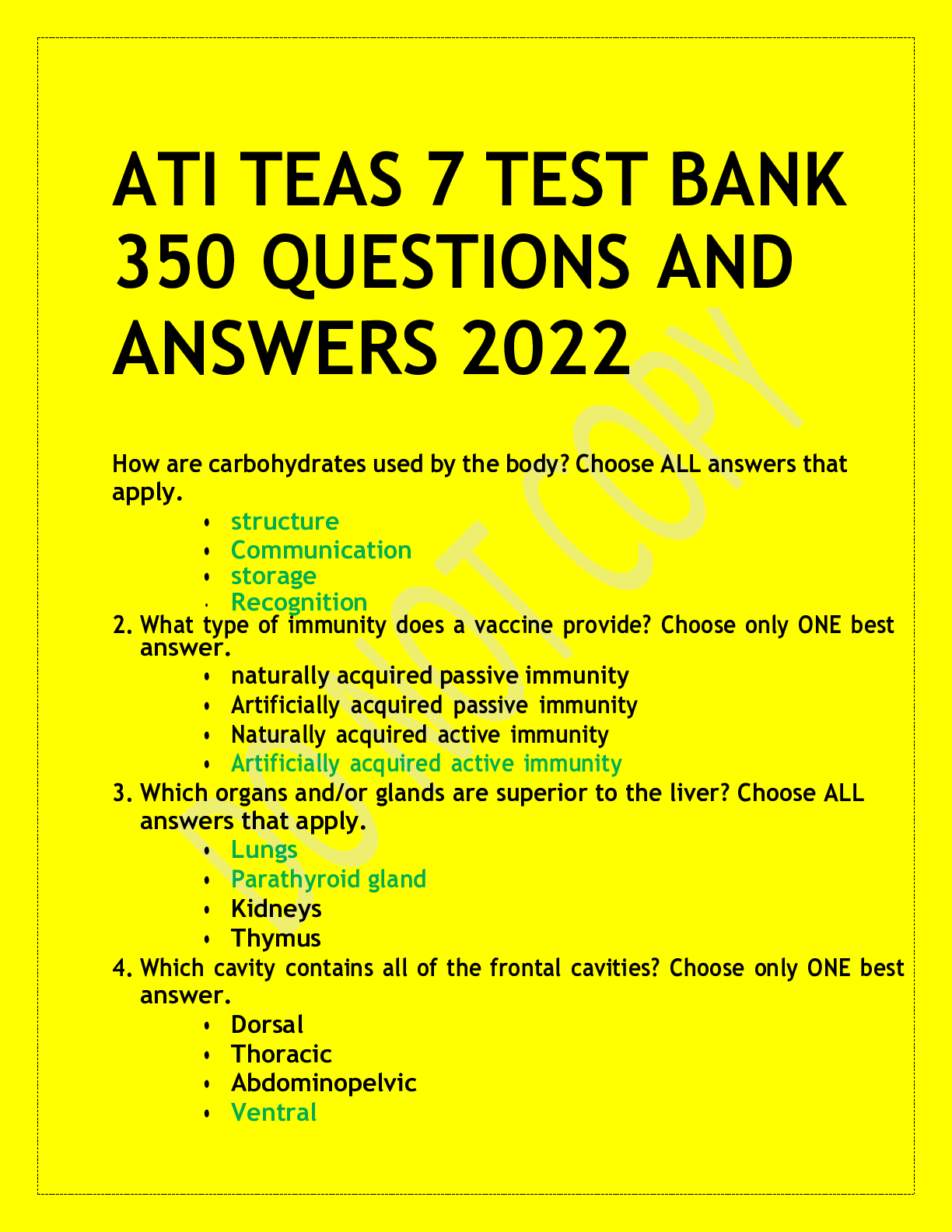
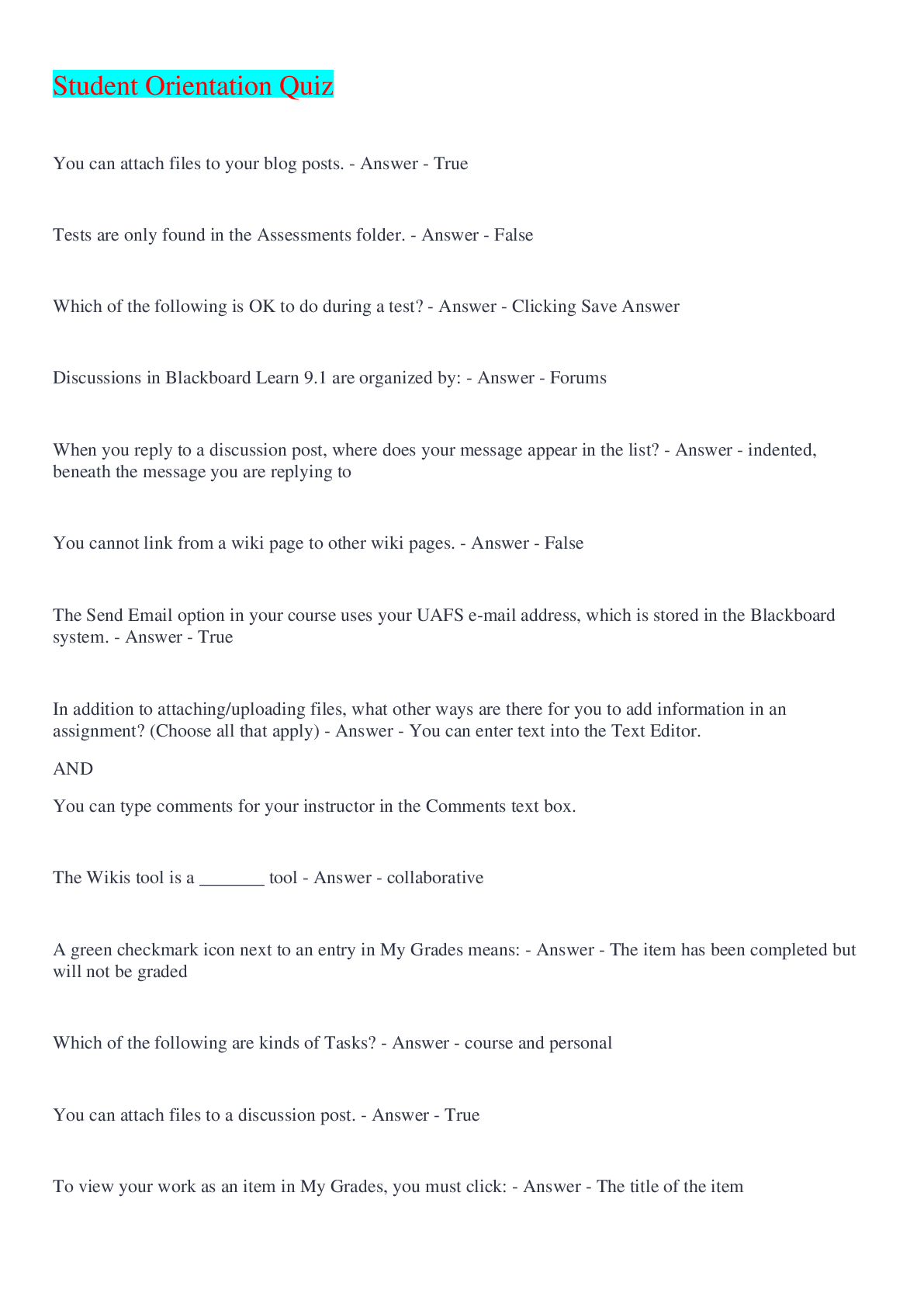

.png)
.png)


